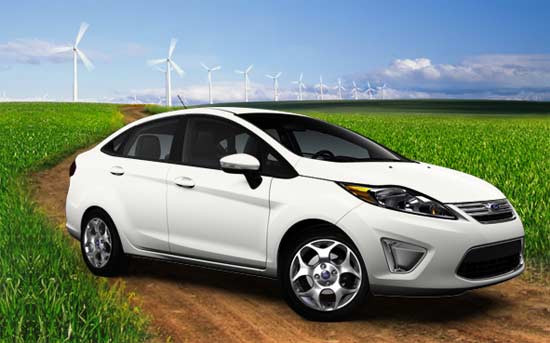I’m more of a green computing/data center/gadgets/ type of guy, with a sprinkling of cleantech and smart grid. (Wow, that’s a lotta slashes…) But occasionally there’s a little automotive ingenuity that deserves a mention. Heck, green geeks need to get behind the wheel too, right?
Ford this week announced that its Auto Start-Stop tech will be arriving in its “conventional cars, crossovers and SUVs in North America” by 2012. Fuel savings, says the automaker, range from four to ten percent, depending on the type of vehicle. Here’s how start-stop tech works:
In city driving when the vehicle is stopped, the engine restarts the instant the driver’s foot leaves the brake pedal. When the engine is off, all of the vehicle’s accessories function normally.
…Auto Start-Stop does not require any additional vehicle maintenance. The system uses an enhanced 12-volt automobile battery and upgraded starter motor, said Birgit Sorgenfrei, program manager for Auto Start-Stop.
…The system includes a light on the dash that alerts the driver when the engine is off and a special tachometer that moves the needle to a green zone when the engine is not running.
Europeans and hybrid drivers are already familiar with the tech, and it’s great to see an American automaker make a commitment to bring it to conventional, non-hybrid cars here. And when it arrives, drivers may not even notice according to Barb Samardzich, Ford vice president of Powertrain engineering. She states, in a company release, “For the driver, Ford Auto Start-Stop provides extra fuel efficiency without inconvenience, as it works completely automatically. And, just like in our hybrid vehicles, the heater and air conditioner work as normal so drivers will not sacrifice comfort.” The system will first appear on 4-cylinder models and work its way up to Ford’s mighty V8 (Mustang GT, drool…).
Sure, it may not be as bleeding-edge as the company’s upcoming plug-ins or invoke the geeky fuel-savings possibilities of its in-car infotainment Sync system (co-developed by Microsoft). Nonetheless, it’s a definite step in the right direction toward a new generation of green rides. And given that hybrids, plug-ins and EVs still have a ways to go toward critical mass, it’s a welcome step too.
Image credit: Ford


Leave a Reply